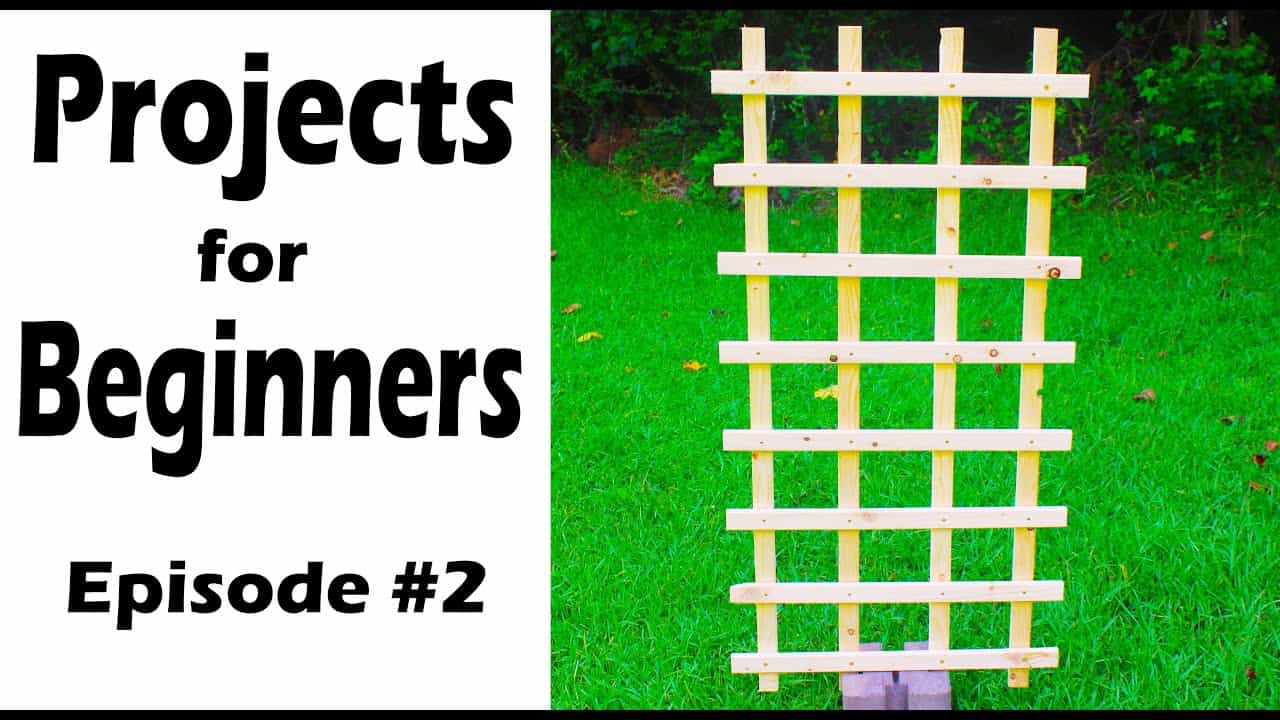This project series was built and designed by Clinton from Specific Love Creations.
It includes three quick, practical builds aimed at new gardeners and DIYers: a protective plant enclosure, a basic trellis, and a raised bed that requires no tools.
These projects focus on simplicity, using common materials and basic assembly to help you get results fast—no advanced joinery, no expensive equipment, and no stress.
Watch the full video and subscribe to Clinton’s channel:
Why Start Simple?
When you’re just starting out, it’s easy to get overwhelmed by complicated plans or a long list of tools you don’t yet own.
Clinton keeps things approachable with designs that use minimal cutting and fasteners while still delivering real, usable results in the garden.
Each project provides a quick win and can be adapted with whatever materials you have on hand. Whether you’re working in a small yard, a container garden, or a larger plot, these builds are meant to help you start with confidence.
Project 1: Wire Frame to Protect Young Plants
The first build solves a common problem—animals nibbling on new plants.
Whether you’re dealing with rabbits, deer, or neighborhood pets, this simple wire cage helps protect transplants and potted plants without interfering with sunlight or water.
A square or rectangular wooden frame is constructed using narrow strips of wood and then wrapped in chicken wire or mesh. The wire is attached with leftover wire segments or zip ties for faster setup.
Make sure to wear gloves when working with mesh, as it can be sharp. Clinton emphasizes that the frame should sit loosely around the plant, making it easy to remove for watering or trimming.
If you’re dealing with small animals, use a finer mesh to keep them out. A single roll of chicken wire can often make several cages, so it’s an affordable solution to protect multiple plants at once.
Project 2: Simple Trellis for Climbing Plants
Climbing plants like beans, roses, or decorative vines can thrive with a little support.
Clinton’s trellis design is simple and scalable—perfect for beginners who want to add height and structure to their gardens without the complexity.
Long vertical slats are paired with shorter cross pieces to form a fan or lattice-style panel. The spacing isn’t critical—plants will quickly cover it—so there’s no need to worry about perfection.
For builds near food plants, it’s best to avoid pressure-treated lumber. Instead, use cedar or other untreated boards to avoid chemical leaching.
Fasten the parts with screws or nails, or use weatherproof adhesive for a cleaner look (though glued joints are harder to fix if anything breaks).
This trellis can be installed vertically to encourage upward growth or laid out horizontally to promote spreading. It’s a forgiving project—small errors disappear once plants grow in—and it’s easy to resize based on your space and plant type.
Project 3: Tool-Free Raised Bed Using Planter Blocks
The third project is a raised garden bed that requires no tools at all. Clinton uses concrete planter blocks and standard 2x lumber to create a sturdy, modular bed that can be customized to any garden layout.
Each block has top recesses designed to hold boards, locking them in place without screws or nails. Boards can be removed or replaced easily, which makes maintenance and seasonal adjustments simple.
Many home improvement stores will even cut the boards to length for you, removing the need for a saw entirely.
This system allows you to stack blocks for extra height or shift the bed layout without rebuilding everything from scratch.
For stability, you can drive rebar through the block centers into the ground, but it’s not necessary for casual use. Just make sure to use soil formulated for raised beds for best results.
Safety and Time-Saving Tips
Across all three builds, Clinton emphasizes safety and efficiency. Gloves are a must when working with mesh, and zip ties are a fast, simple option for fastening compared to twisting wire.
If you don’t have power tools, ask a store to cut your boards—this saves time and lowers the barrier to getting started. And if you do have saws and drills, the projects go even faster.
Each build is designed to be easy to maintain over time.
Replace broken zip ties or weathered boards as needed, and don’t stress about small imperfections—they won’t matter once your garden starts to grow.
Personalize and Expand
These projects offer plenty of flexibility for customization. Paint or stain the trellis and raised bed boards for added durability and a more polished look.
Line the inside of your raised bed with landscape fabric to improve drainage and prevent soil loss.
Tweak the frame sizes or add extra features like handles, feet, or additional crossbars depending on your needs. The goal is to make your garden work for you, starting with projects that don’t feel intimidating.
A Great Place to Begin
Clinton’s three beginner builds are low-cost, low-commitment ways to start working with wood and improving your garden at the same time.
They’re a great way to gain confidence with tools while producing something immediately useful.
Watch the full video and subscribe to Clinton’s channel:
